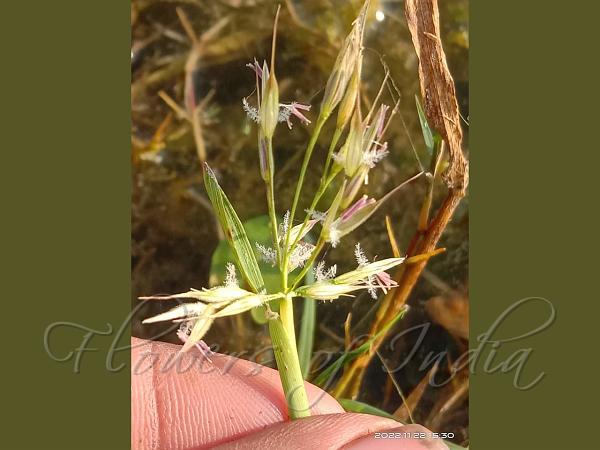|
| Asian Watergrass |
|

|

|
|
|
|
Photo: |
Botanical name: Hygroryza aristata Family: Poaceae (Grass family)
Synonyms: Zizania aristata, Pharus aristatus, Leersia aristata
Synonyms: Zizania aristata, Pharus aristatus, Leersia aristata
Asian Watergrass is a floating grass forming pure mats
on the surface of the water. Stems are 30 cm or more long, spongy, with
whorled feathery roots at the nodes. Leaf-blades are flat,
ovate-oblong, blunt, 2.5-7.5 cm long, 1.2-2 cm wide, scaberulous above,
smooth and glaucous beneath, rounded or subheart-shaped at the base.
Panicles are triangular, 3-6 cm long and wide, the lower branches
spreading or sometimes deflexed. Spikelets are stalkless or very
shortly stalked with a long flower-stalk-like callus articulated with
the panicle-branch or flower-stalk and falling with the spikelet; body
of lemma up to 10 mm long, passing into the 10-12 mm long, scaberulous
awn. Cattle are fond of it and people have been known to eat the grain.
Asian Watergrass is found in the Indian Subcontinent to S. China and
Indo-China, Taiwan.
| Identification credit: Pramesh Dani | Photographed in Gonda, Uttar Pradesh. |
• Is this flower misidentified? If yes,